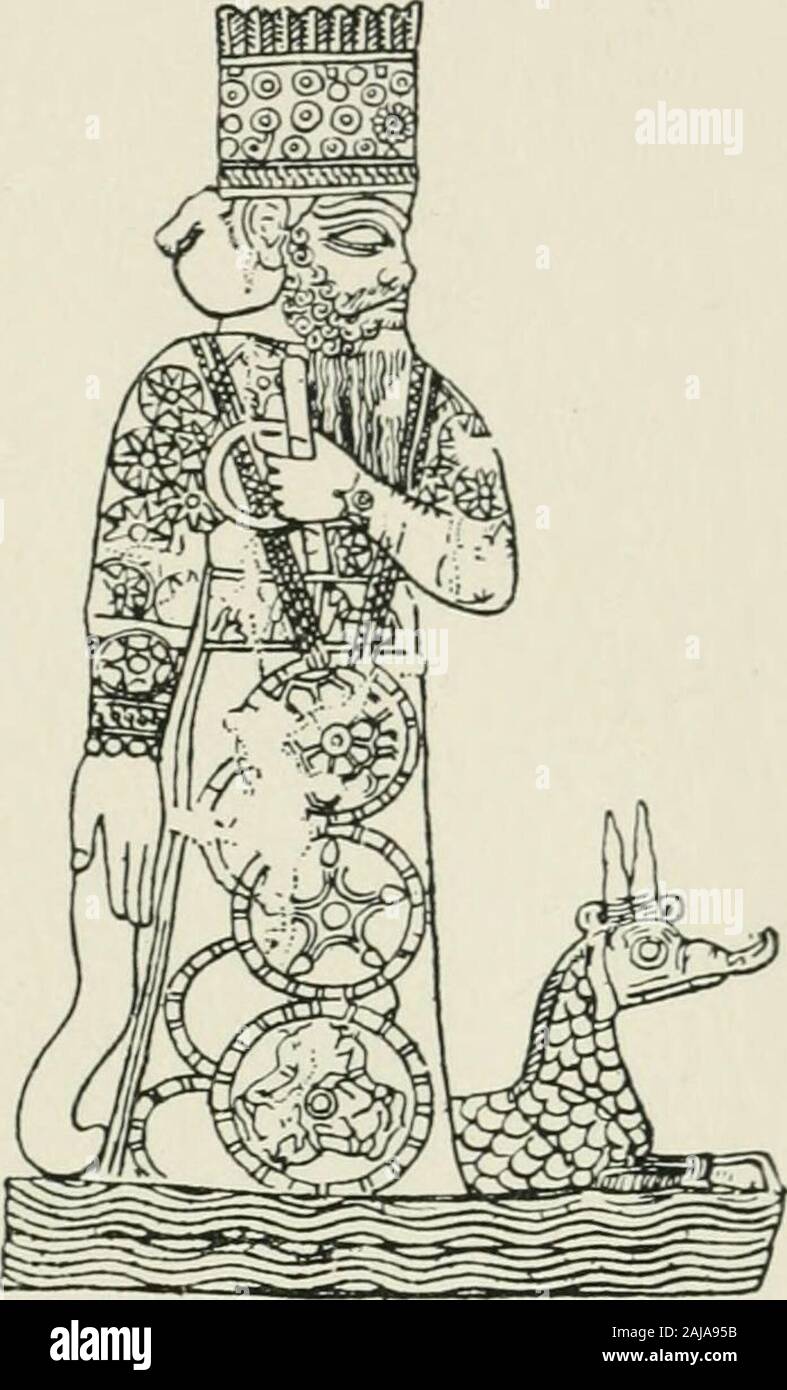A history of Babylon from the foundation of the monarchy to the Persian conquest . igure of JNlarduk andhis dragon, which was dedi-cated in E-sagila at Babylonby Marduk-zakir-shum, theson and successor of Nabu-aplu-iddina. It was originallycoated with gold, and thedesign and execution of thefigure may be compared dththose of the Sun-god Tablet,as an additional example of the decorative character ofBabylonian stone-engraving in the ninth century. It was in Marduk-zakir-shums reign that Assyriacapped her conquests of this period by becoming thesuzerain of Babylon. Under Ashur-nasir-pal and Sha

Image details
Contributor:
The Reading Room / Alamy Stock PhotoImage ID:
2AJA95BFile size:
7.2 MB (276.4 KB Compressed download)Releases:
Model - no | Property - noDo I need a release?Dimensions:
1231 x 2031 px | 20.8 x 34.4 cm | 8.2 x 13.5 inches | 150dpiMore information:
This image is a public domain image, which means either that copyright has expired in the image or the copyright holder has waived their copyright. Alamy charges you a fee for access to the high resolution copy of the image.
This image could have imperfections as it’s either historical or reportage.
A history of Babylon from the foundation of the monarchy to the Persian conquest . igure of JNlarduk andhis dragon, which was dedi-cated in E-sagila at Babylonby Marduk-zakir-shum, theson and successor of Nabu-aplu-iddina. It was originallycoated with gold, and thedesign and execution of thefigure may be compared dththose of the Sun-god Tablet, as an additional example of the decorative character ofBabylonian stone-engraving in the ninth century. It was in Marduk-zakir-shums reign that Assyriacapped her conquests of this period by becoming thesuzerain of Babylon. Under Ashur-nasir-pal and Shal-maneser the military organization of the country hadbeen renewed, and both made effective use of their See Plate XXIII. For a translation of the memorial, see Bab. Boundary-Stones and Memorial Tablets in the Brit. Mus., pp. 120 ff. The tablet wasfound in a clay coffer, in which it had been placed at a later period by Nabo-polassar, together with clay impressions of the sculptured scene, to preserve thedesign of the relief in case the tablet itself should eventually be broken.. Fig. 59. mabduk and his dragon from avotive offering of biarddk-zakir-shuii. [After Weissbach.] 262 HISTORY OF BABYLON extraordinarily efficient armies. Ashur-nasir-pals policywas one of annihilation, and the speed with which hestruck ensured his success. Thus when he crossed theEuphrates after taking Carchemish, the king ofDamascus, the most powerful and important state inSyria, made no attempt to oppose him or to organize adefence. He had evidently been taken by surprise. But Syria then learned her lesson, and at the battleof Karkar in 854 B.C. Shalmaneser found himselfopposed by a confederation of the northern kings, and,